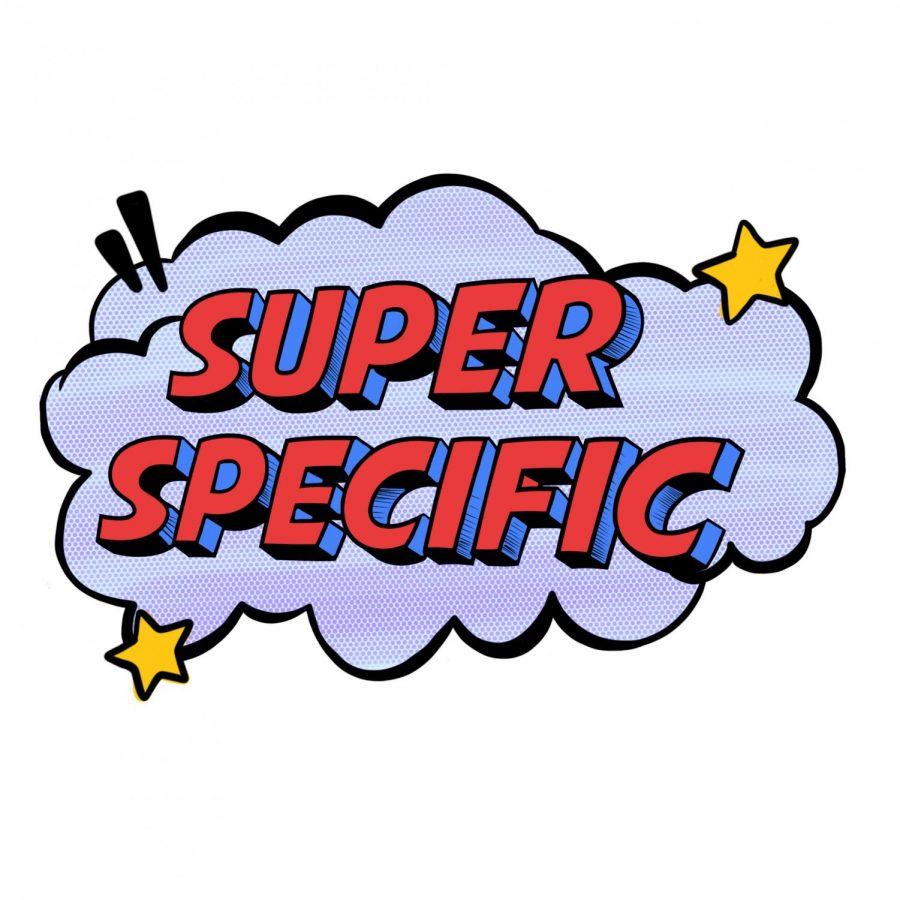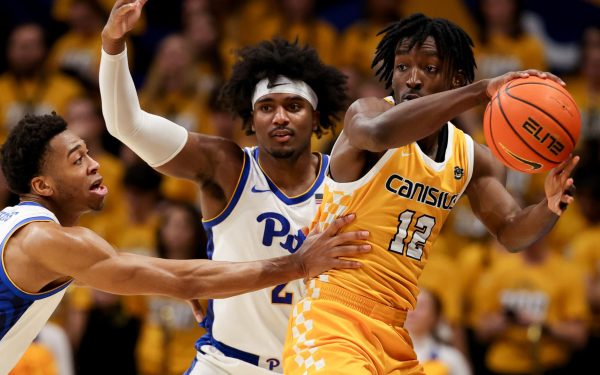Super Specific | The art of the rated “R” superhero movie
Super Specific is a bi-weekly blog about superheroes in pop culture.
March 4, 2022
James Mangold’s “Logan” is one of the finest superhero movies ever made.
In truth, I think it could go toe to toe with “The Dark Knight” for that top slot. I love both of them dearly, and my favorite changes by the day. But in terms of its faithfulness to the character, there is no movie out there that has “Logan” beat.
And part of the reason this movie succeeds is because it was given an R rating.
Before “Logan” was released in 2017, the fan-favorite Marvel mutant Wolverine starred on the big screen in the early 2000s X-Men series along with a few solo spin offs like “X-Men Origins: Wolverine” and “The Wolverine.”
The X-Men series is pretty good all around, and Hugh Jackman, who holds the Guinness world record for longest career as a live-action superhero after 16 years of playing the role, is usually one of the stand-out stars in the film.
His first solo movie, “X-Men Origins: Wolverine,” was an abominably bad superhero film, which it owes mostly to a nonsense plotline and some questionable character depictions. Its sequel, “The Wolverine,” which Mangold helmed, was significantly better.
But Wolverine, as I think many comic fans will agree, is at his best when he’s covered in blood, beated, bruised and dropping f-bombs like his life depends on it — as he does in the comics.
“Logan” is inspired by the “Old Man Logan” comic plotline, which follows an aged and worn-out Logan living in an apocalyptic future of Earth dominated by various Marvel supervillains.
The film is set in the vague future of the X-Men movies storyline, where no mutants have been born in the last 25 years. Logan cares for a senile Professor X (Patrick Stewart) in a an abandoned smelting plant with the fellow mutant Caliban (Stephen Merchant) in El Paso, Texas. Logan’s own mutant powers, which have kept him alive for more than 200 years, are starting to fade.
He’s suicidal, he’s angry, he’s terrified — and then he meets his biological daughter Laura (Dafne Keen), or X-23, who’s escaped from the biotechnological corporation Alkali-Transigen, which has been making mutants secretly in their labs.
If you plan on watching the movie, stop reading now to avoid spoilers, but Logan dies in the end. And for real this time, since his powers don’t work anymore. And throughout the entirety of the film, he’s stabbed and beaten, and that R rating is doing its best to show you all the blood and guts involved. There’s one scene where Logan literally pulls stuck adamantium claws out of his skin, pus leaking from the holes on his knuckles.
The movie takes time to focus on what really makes Logan, well, Logan. His trauma, his grief and his love for his mutant family. And his life hasn’t been pretty, seeing the effects of his centuries long fight against the world, breaks your heart and then mends it back together when he finally finds peace in the arms of his daughter.
“Logan’s” success, which included its selection by the National Board of Review as one of the top 10 films of 2017 and its nomination for Best Adapted Screenplay at the Oscars — is owed in part to the 2016 film “Deadpool.”
“Deadpool” really was a fluke. The movie spent years in development hell until some test footage from the “X-Men Origins: Wolverine” movie, in which Deadpool was briefly featured, was leaked. It gained positive chatter on the internet, and company executives greenlit the production for the actual movie.
You can’t really make a Deadpool movie without it being raunchy — the character’s nickname is “The Merc with a Mouth,” after all — and damn, was it good to see such a funny, bloody and oftentimes nauseating Deadpool on-screen. The movie is fantastic, its sequel even more so, and we finally found something for Ryan Reynolds to do all these years. It’s what he deserves.
“Logan” followed on that wave of the new “rated R superhero movie success” and succeeded — but not every movie is a “Logan” or a “Deadpool” and unfortunately, what we’ve seen following these films is a bunch of copycats that never quite meet the mark.
Let’s start with “Suicide Squad.” The third movie in the DC Extended Universe, “Suicide Squad” came out in August of 2016 following Deadpool’s successful February release that same year.
It was critically unsuccessful, and while “Suicide Squad” made $746 million worldwide as the 10th highest-grossing film of the year, it has since come under a veil of creative controversy in recent years linked to the mythical Ayer Cut.
To be clear, the Ayer Cut isn’t something you can go watch. It gets its name from “Zack Snyder’s Justice League,” a four-hour cut of the 2017 movie “Justice League,” which was released on HBO Max in 2021. It was marketed as Zack Snyder’s original vision of the film before he had to depart production because of the death of his daughter.
David Ayer, the director of Suicide Squad, stoked the flames of suspicion many times on Twitter about his own version of the movie — which is supposedly less jokey and more serious with a musical score of its own, not relying on ‘90s hip-hop songs.
In a 2021 interview with Entertainment Weekly, Ayer spoke about his cut of the film — highlighting how WarnerBros apparently edited and demanded shoots for the film after Deadpool’s release in an attempt to bank on that “funny rated R” success. Ayer pointed to the 2016 Comic-Con trailer, which was made before the movie’s shift in tone, as how he envisioned the film.
However, “Suicide Squad” was rated PG-13, so WarnerBros wasn’t willing to completely commit to that R-rated aesthestic. And interestingly enough, the movie’s sequel, which the infamous James Gunn directed, was given a R rating. It was received much better critically.
But that doesn’t mean that a R rating automatically makes a superhero movie great, and while the general public may not agree with me on this — and I expect a slew of angry emails — I think that the 2019 hit movie “Joker” starring Joaquin Phoenix was not the smash hit that so many people hold it up to be.
One, I don’t see the point in giving the Joker an origin story period. In the comics, we get a little bit of background on the Joker, particularly in Alan Moore’s famous “The Killing Joke.
And while “The Killing Joke” definitely meets that mature rating, the Joker’s origins are clouded from the readers — as he’s not given a real name to link him to a normal life.
The “Joker” movie throws all of that out the window and christens Batman’s favorite villain as one Arthur Fleck, a mentally ill comedian who’s stuck caring for his ailing mother in a down-trodden Gotham.
And sure, Joaquin Phoenix is a great actor, and his performance was well done. But I wasn’t exactly chomping at the bit watching him dance in a dirty Gotham bathroom to some creepy imaginary cello sonata.
“Joker” doesn’t really fit in the DC universe without Batman — that’s his whole point. And in the film, Batman doesn’t exist yet. They’re antitheses of one another, playing the same game over and over again until one of them breaks, which, despite Joker’s heinous amount of sick crimes committed just to make Batman crazy, never seems to happen.
Two, “Joker” was made on the back of WarnerBros intent to move away from universe-centered stories. After the DCEU’s failure, it makes sense from a financial standpoint, but I’m of the opinion that not every villain or side character needs their own damn show. Especially if this production is just going to be the “nitty-gritty” R-rated version they think we want to see.
Gotham is already pretty traumatizing. There doesn’t need to be a spin-off for people to realize that.
Either way, Hollywood is making films now it never would have touched twenty years ago. On the wings of “The Dark Knight” as the first “serious” superhero movie came “Deadpool,” then “Logan,” and then all the rest.
Will this trend die out anytime soon? Probably not, especially with TV Shows like “The Boys” and “Peacemaker” still running, but it’s a fascinating thing to observe, the nuances in which these superheroes have their stories told — and which few select productions succeed.








